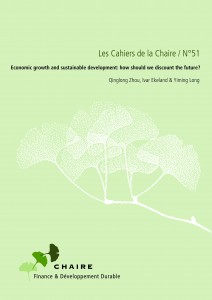 by Qinglong Zhou, Ivar Ekeland, Yiming Long
by Qinglong Zhou, Ivar Ekeland, Yiming Long
In 1987, the Brundtland Commission famously defined sustainable development as “developmentthat meets the needs of the present without compromising the needs of the future”. This paper is concerned with translating this definition in the framework of the neoclassical one-sector model of economic growth. We investigate and compare three possible criteria for sustainable development. The first one, which was introduced by Chichilnisky, the second one, which was introduced by Ekeland and Lazrak, and the third one, which goes back to Ramsey himself. We define and investigate equilibrium strategies. For the Chichilnisky criterion, there is a unique equilibrium strategy, which is just the optimal strategy for the neoclassical model. In the other two cases, there is a continuum of equilibrium strategies. We conclude that the most satisfying candidates for sustainable development are the equilibrium strategies for the third criterion (H-criterion).
